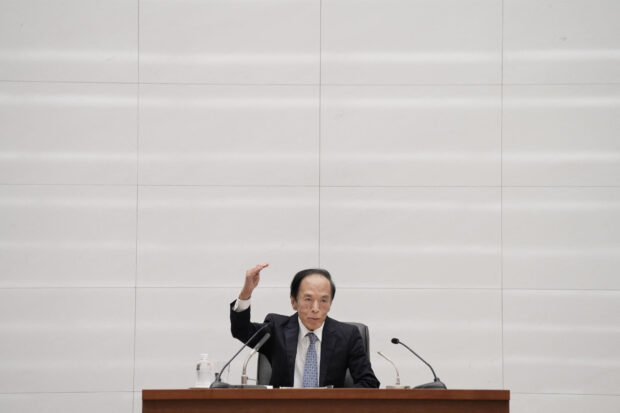
Bank of Japan Governor Kazuo Ueda speaks at a press conference after its policy meeting in Tokyo, Japan Oct 31, 2023, in this photo taken by Kyodo. Mandatory credit Kyodo via REUTERS/File photo
TOKYO -Bank of Japan Governor Kazuo Ueda said on Thursday the central bank has several options on which interest rates to target once it pulls short-term borrowing cost out of negative territory.
He also said the central bank will face an “even more challenging” situation in the year-end and the start of next year, when asked about the economy and monetary policy guidance.
The remarks came in the wake of those by Deputy Governor Ryozo Himino on Wednesday elaborating on the potential impact an exit from ultra-loose monetary policy could have on the economy.
With inflation exceeding the BOJ’s 2 percent target for more than a year, many market players expect the bank to phase out its massive stimulus next year with some betting on an action in January.
“We could either keep the interest rate applied to reserves (financial institutions park with the central bank), or revert to a policy targeting the overnight call rate,” Ueda said.
“There are various options. But we have not made a decision yet on which interest rate to target once we end our negative interest rate policy,” he told parliament.
The BOJ currently applies a 0.1- percent charge on a small pool of reserves under its negative interest rate policy, which was put in place in 2016 to keep borrowing costs ultra-low.
“Whether we keep short-term rates at zero or move them to 0.1 percent, and at what speed we will push up rates to 0.25 percent or 0.50 percent, would depend on economic and financial conditions at the time,” Ueda said on the rate path upon ending negative rates.
The central bank has stressed the need to maintain ultra-low interest rates until sustained, stable achievement of its 2 percent inflation target, accompanied by wage hikes, is in sight.
Ueda repeated that Japan has yet to show convincing signs that sustained achievement of the BOJ’s target can be foreseen, adding that next year’s wage outlook was crucial for judging whether inflation will durably hit the target.


